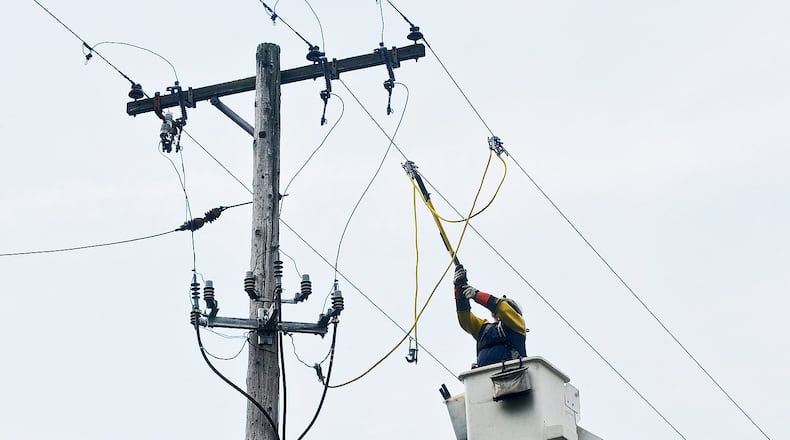In testimony included in the application, DP&L rates analyst Robert Adams said the rate impact for a “typical residential customer in 2017” using 1000 kilowatts per month can expect their bills to go down 87 cents per month, or a 0.76 percent decrease.
No estimate is given beyond 2017, however.
The new rider — called a “distribution modernization rider” — would be charged during the seven years of a proposed “electric security plan” DP&L wants the PUCO to approve, amounting to more than $1 billion over that period, Jan. 1, 2017 to Dec. 31, 2023.
In a 22-page application, the utility said recent actions by credit rating agencies “demonstrate its need.”
“Without approval of the company’s (distribution and modernization rider), both DP&L and its parent DPL Inc. would be unable to maintain their financial integrity,” the company said in its application to the PUCO.
In June, S&P Global Ratings ruled that an Ohio Supreme Court ruling that month “increased the likelihood of a weaker financial profile, reflecting weaker financial measures for DPL and DP&L that could result in a near-term ratings downgrade.”
That month, the Ohio Supreme Court reversed a PUCO decision that let DP&L charge customers extra in an “electric security plan service stability rider.”
In July, Fitch Ratings revised its outlook for DP&L from “stable” to “negative,” the utility said.
The Oct. 11 application was filed as an updated application in the company’s “electric security plan” docket before the PUCO, a PUCO spokesman said.
RELATED: DP&L switches proposed electric charge before hearing
RELATED: Group urges PUCO to halt DP&L charge
In the Oct. 11 application, the utility seeks approval of several riders, including a “distribution investment rider,” a “reconciliation rider,” a “distribution decoupling rider,” and a “clean energy rider.”
A PUCO spokesman couldn’t immediately say how residential bills would be impacted. A hearing is scheduled for Dec. 5 at PUCO offices at 180 East Broad St., Columbus.
Last week, the PUCO agreed to a distribution modernization rider of $132.5 million a year for Akron energy provider First Energy.
A statement from the Office of Ohio Consumers’ Counsel noted a similarity between the two riders.
“Ohioans’ electric bills should reflect lower prices in the competitive energy markets,” Ohio Consumers’ Counsel Bruce Weston said in an emailed statement. “Unfortunately, Ohio’s electric utilities, such as DP&L, continue to ask state government for subsidies at consumers’ expense, above the market price of electricity. Making consumers pay subsidies to utilities is contrary to Ohio’s law favoring competitive electric markets.”
About the Author
